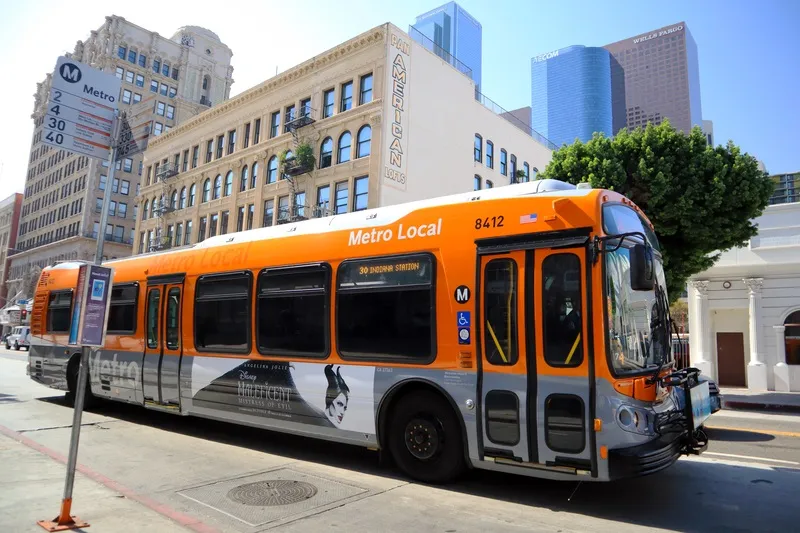According to a new market research report by MarketsandMarkets, the automated passenger counting (APC) systems market is expected to reach US$298 million by 2022, while the passenger information (PI) systems market is expected to reach US$11.34 billion by 2022.
According to the report, the factors driving the growth of the market include the increasing demand for real-time transit information, increased adoption of advanced solutions in the transport sector, advantages offered by APC to transit operator
March 27, 2017
Read time: 2 mins
According to a new market research report by 6418 MarketsandMarkets, the automated passenger counting (APC) systems market is expected to reach US$298 million by 2022, while the passenger information (PI) systems market is expected to reach US$11.34 billion by 2022.
According to the report, the factors driving the growth of the market include the increasing demand for real-time transit information, increased adoption of advanced solutions in the transport sector, advantages offered by APC to transit operators in optimising operational cost and government regulations such as the requirement for regular passenger data from transit operators.
Stereoscopic vision technology-based passenger counting system are said to have an accuracy of more than 95 per cent and are capable of counting and monitoring entrance and exit traffic separately while differentiating between adults, children and luggage. In addition, they are capable of counting multiple passengers entering. This technology can cover the widest entrance area for passenger counting and accuracy is unaffected by tough environmental conditions such as varying lighting and temperature conditions.
Bus transit operators are interested in determining passenger travelling patterns for accurate route and timing schedules. Government regulations to provide ridership data, increasing adoption of APC in the developing countries and integration of APC with other technologies are some of the drivers for the growth of passenger counting systems in buses.
In railways applications, passenger information systems installed in ticket halls, on platforms, in trains and train stations are included. The passenger information systems provide real-time information related to trains' timetables, train delays, current location, emergency announcements, advertisements and infotainment services. The delivery of real-time passenger information to targeted passengers is challenging, and passenger information systems help transit operators to deliver information to passengers.
The APAC region comprises highly populated and rapidly developing countries such as China and India, which, according to the report, are investing huge amounts of money in developing the transportation sector to match the economic and cultural standards of developed countries, which would drive the automated passenger counting and information system market in the region. The increasing adoption of automated passenger counting and information systems in transit vehicles, including trains, metros, and buses, in the countries such as India, Australia, China and others spurs the growth of the automated passenger counting and information system markets.
According to the report, the factors driving the growth of the market include the increasing demand for real-time transit information, increased adoption of advanced solutions in the transport sector, advantages offered by APC to transit operators in optimising operational cost and government regulations such as the requirement for regular passenger data from transit operators.
Stereoscopic vision technology-based passenger counting system are said to have an accuracy of more than 95 per cent and are capable of counting and monitoring entrance and exit traffic separately while differentiating between adults, children and luggage. In addition, they are capable of counting multiple passengers entering. This technology can cover the widest entrance area for passenger counting and accuracy is unaffected by tough environmental conditions such as varying lighting and temperature conditions.
Bus transit operators are interested in determining passenger travelling patterns for accurate route and timing schedules. Government regulations to provide ridership data, increasing adoption of APC in the developing countries and integration of APC with other technologies are some of the drivers for the growth of passenger counting systems in buses.
In railways applications, passenger information systems installed in ticket halls, on platforms, in trains and train stations are included. The passenger information systems provide real-time information related to trains' timetables, train delays, current location, emergency announcements, advertisements and infotainment services. The delivery of real-time passenger information to targeted passengers is challenging, and passenger information systems help transit operators to deliver information to passengers.
The APAC region comprises highly populated and rapidly developing countries such as China and India, which, according to the report, are investing huge amounts of money in developing the transportation sector to match the economic and cultural standards of developed countries, which would drive the automated passenger counting and information system market in the region. The increasing adoption of automated passenger counting and information systems in transit vehicles, including trains, metros, and buses, in the countries such as India, Australia, China and others spurs the growth of the automated passenger counting and information system markets.










